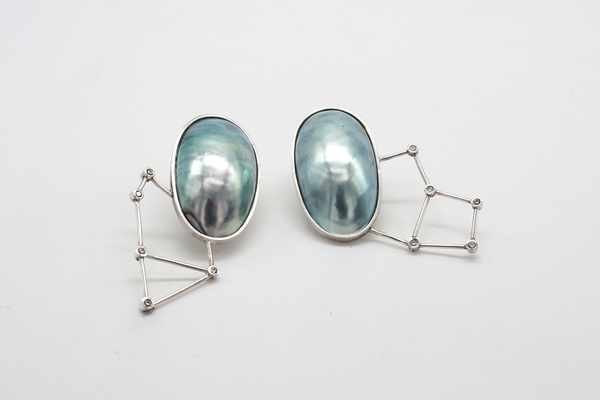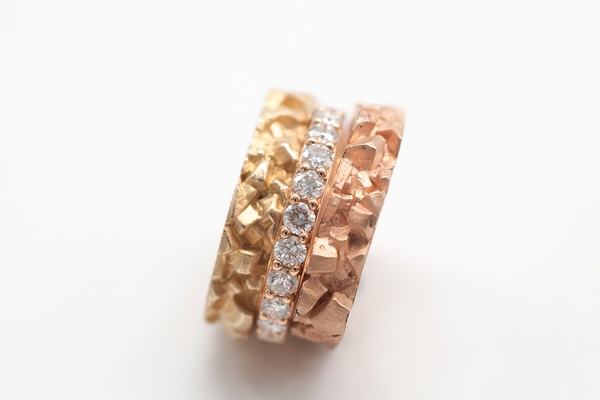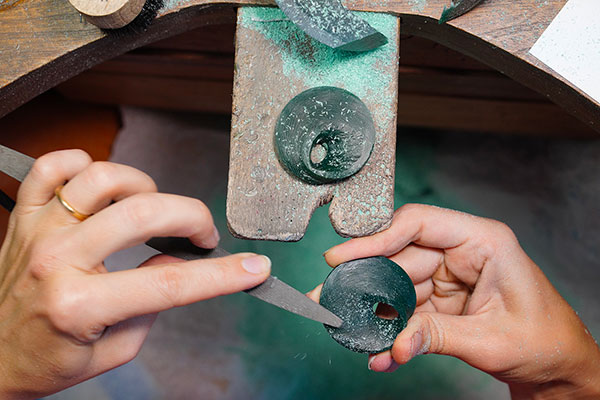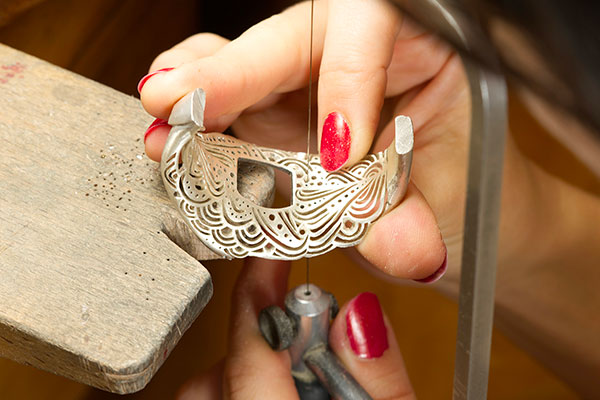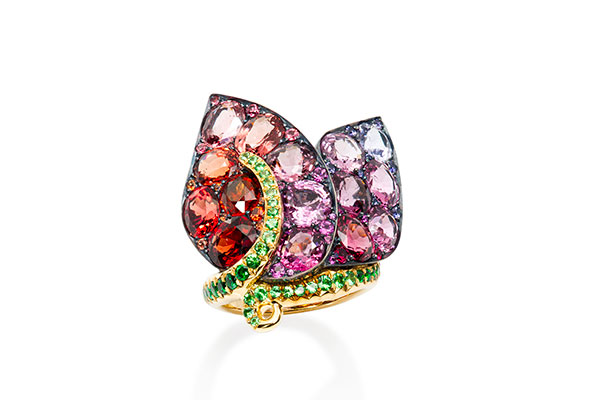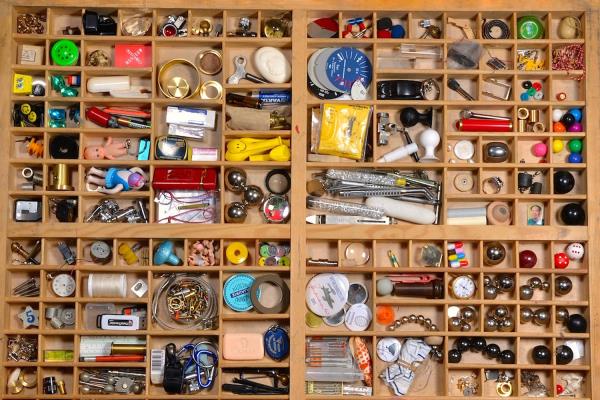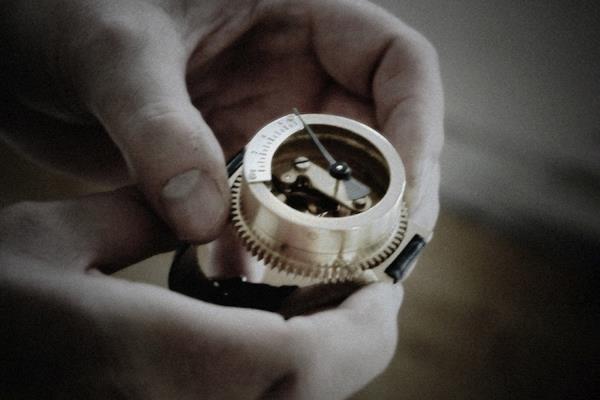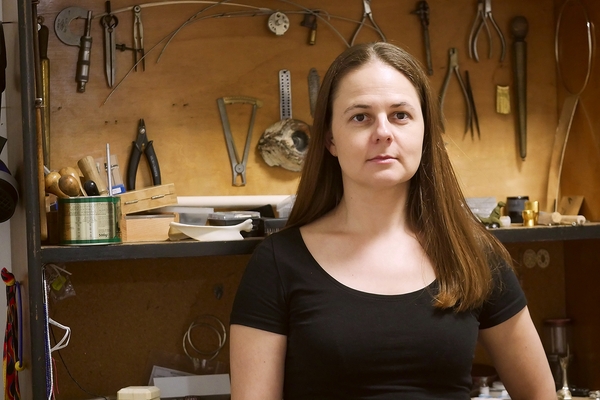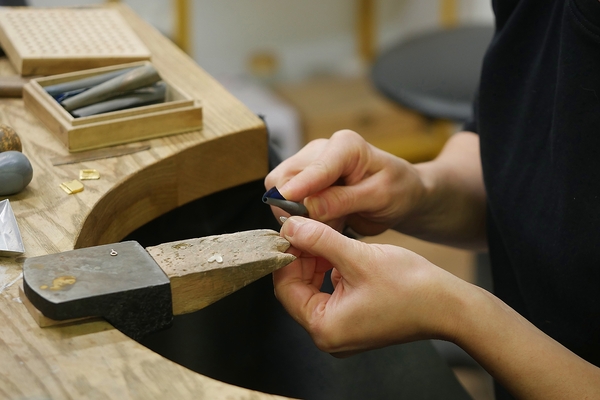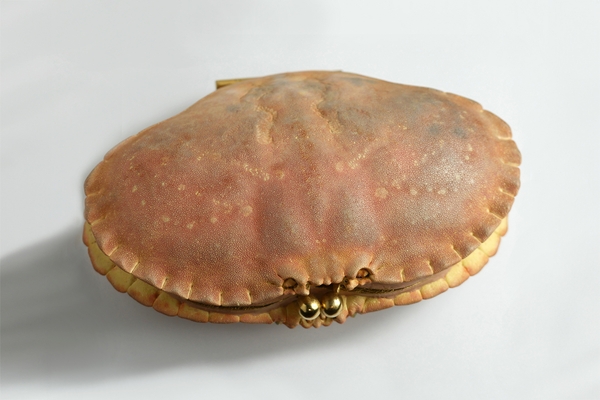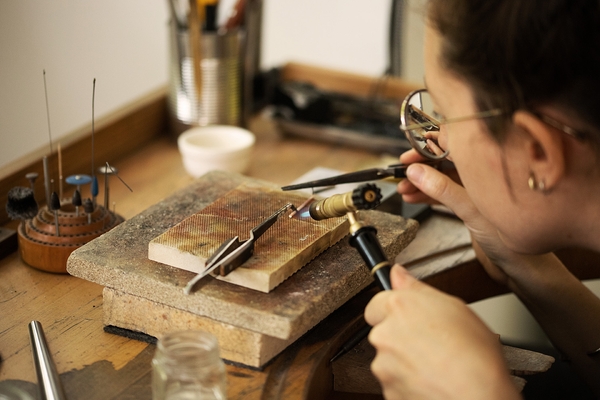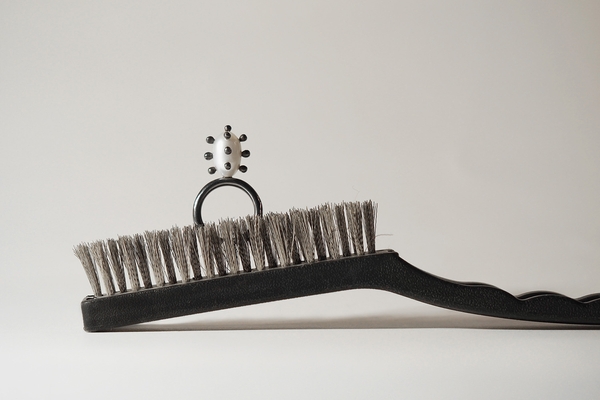

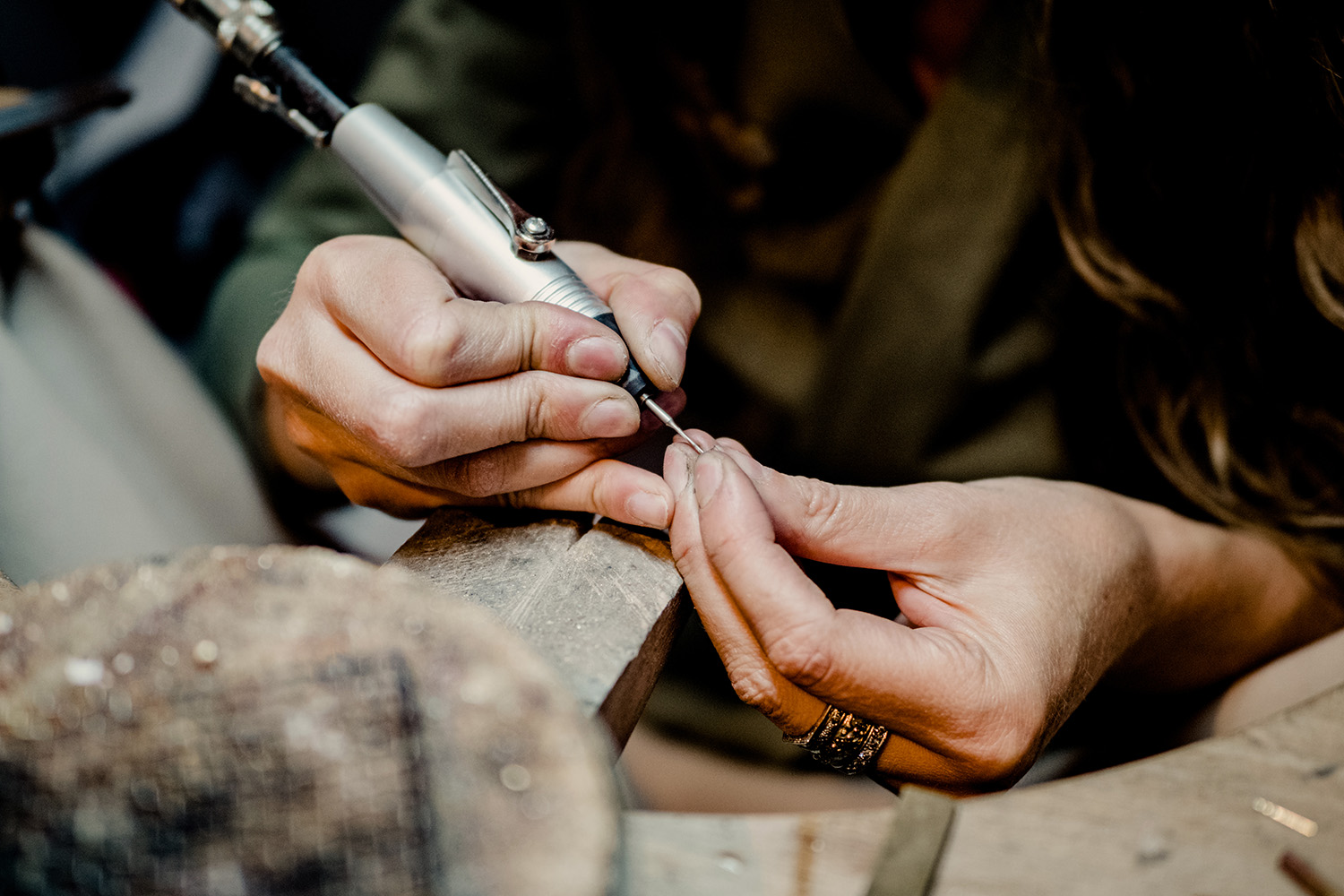
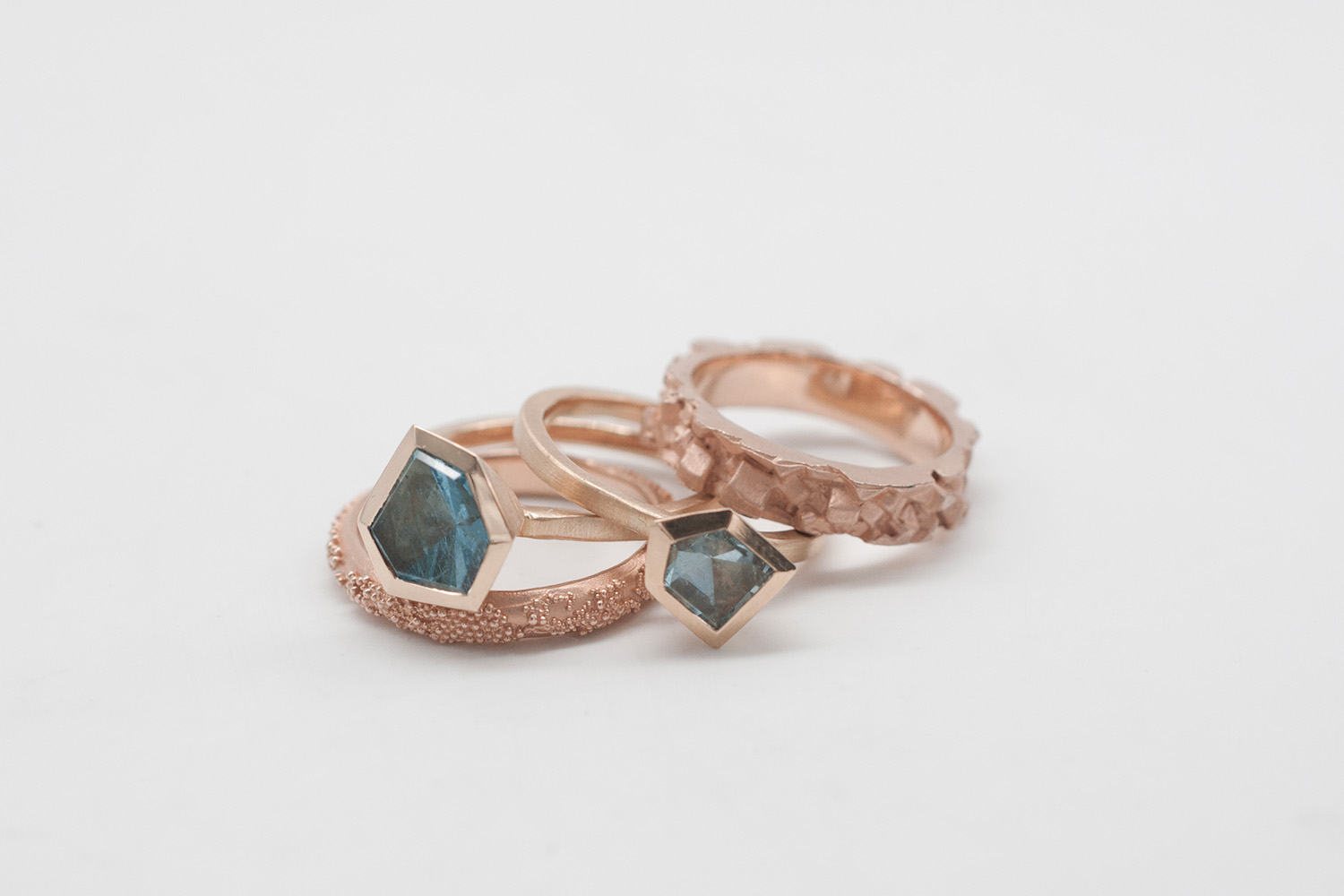




Setting time aside for creativity
- Elisabeth has an eclectic design process
- Experimenting fuels her creativity
- She believes tradition and innovation belong together
Elisabeth Habig studied millinery because she has always liked to work with her hands. But the experience of soldering a piece of wire into a ring made her change her path. "Creating the ring without seeing its beginning and end afterwards was a magical experience," she says. A passionate collector of structures, Elisabeth loves casting techniques in all their variations, including sand and cuttlefish bone casting. She experiments a lot with organic materials to develop her unique design language. Her Globetrotter collection became a trademark: the series, consisting of bracelets, rings, necklaces and earrings, is inspired by the ancient Etruscan granulation technique, in which tiny metal beads create a relief reminiscent of geographical maps.
Interview
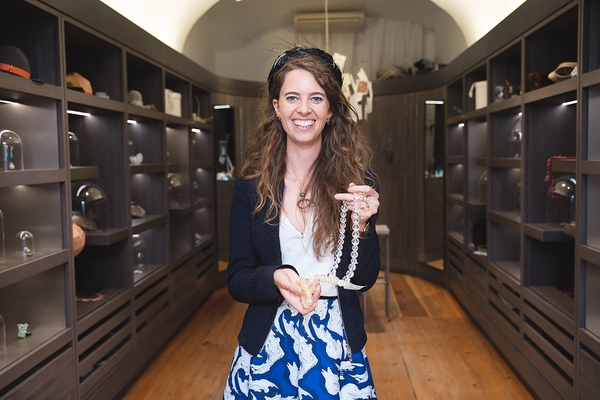

- What is your design process?
- My design process is different every time. But I never make drawings in advance. When I am working on a topic, I often let words guide me. Other times I find a great stone and then I build the design idea around the material.
- What extraordinary materials do you work with?
- If you wet parchment, you can shape it any way you like. I once stretched it over a pearl chain and then inserted one of the pearls into the cast. Parchment hardens when it dries, but it is still stretchy. It just stays in this moment, and this can be really beautiful.
- How do you keep your creativity fresh?
- Working on passion projects without commercial pressure keeps my creative juices flowing. My big goal is to keep a day a week free for personal projects, creativity and experimenting. It is essential for me to set this time aside, as my imagination is what sets me apart from other goldsmiths.
- What is your approach to balancing innovation with tradition?
- Both are important. Without tradition, the craft would die out and eventually, everything would come from the 3D printer. Many practices are already falling victim to these efficiencies. But innovation – new ideas, forms, and techniques – is also crucial. The two go together.
Elisabeth Habig is an expert artisan: she began her career in 2012
Where
Elisabeth Habig
